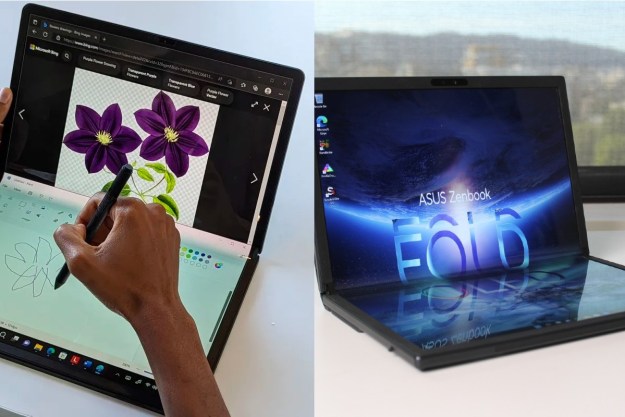Lenovo’s Yoga started as a single laptop – arguably one of the most influential in the past half-decade, as almost everyone has emulated its design. Since then, it has expanded into an entire model line and became a flagship for the company. Now, at IFA 2015, it has become the face of ThinkPad. Lenovo spent more time talking about the new ThinkPad Yoga 260 than any of the numerous laptops it debuted at the show.
At first glance, the Yoga 260 doesn’t seem that remarkable. While certainly portable, its weight of 2.9 pounds doesn’t break records, and its 19 millimeter profile is fairly standard for the category. Toshiba’s Radius 12 weighs the same, and it’s a few millimeters thinner. While it’s nice to see the 260 offer a 6th-generation U-Series Core, rather than wimp out and choose a Core M, the convertible isn’t overly powerful for its class.
Use the device, though, and it’s clear that the 260 defies the old adage – in this case, it’s what’s on the outside the counts. This is a ThinkPad, and a fairly faithful one at that, as it offers metal hinges, an awesome keyboard, and a handy trackpointer. These defining characteristics are well executed despite the convertible design, slim profile and small display. I think most business travelers would be as happy using the 260 for a day as they’d be using the T450s.
At first glance, the Yoga 260 doesn’t seem that remarkable.
It helps that it feels rock solid, as well. Aside from the aforementioned hinges, Lenovo has bestowed the system with its classic matte black, magnesium alloy finish. Though it feels a bit like plastic, this material doesn’t flex as easily, and is far more resistant to accidental damage. Lenovo suffered some on-stage embarrassment when it dropped a 260 to prove its durability, then found it wouldn’t turn on – but I’d expect this ThinkPad to hold up well. It certainly feels more durable than the Toshiba Radius. And that system is far from fragile.
Battery life is rated at 10 hours. That is, of course, a figure subject to some interpretation, but it’s certainly higher than the Toshiba Radius 12’s claim of eight hours. The difference is significant – if it translates to real world use.
As a laptop, the system works very well. As a convertible, it falls victim to the same traps that ensnare most of its peers. The 260 does include Lenovo’s lift-and-lock keyboard, which moves the keys flush with the laptop’s body when it’s used in tablet mode, but it otherwise remains a bit too large and heavy for truly comfortable hand-held use. Using it on the show floor, I found that manipulating it with one hand was virtually impossible, and even holding it aloft without both paws quickly became tiring.
I was also disappointed to learn the system comes standard with an HD (as in, 1,366 x 768) display, in spite of its $949 price tag. A 1080p display is available, but not making it standard is a major mistake. All the potential competitors offer 1080p standard, and many also provide a 1440p or 4K upgrade. Lenovo’s argument is that the ThinkPad’s durability comes at a price, but I’m not sure that argument holds weight even among the majority of business and enterprise users. Today’s best consumer laptops are (usually) robust enough.
The 260 holds a lot of promise. A lot of small convertibles stumble on fundamentals like keyboard quality and hinge type, traits this Lenovo nails. The price seems high for what’s offered, however, and it’s still not much fun to use in tablet mode. In short, the ThinkPad Yoga 260 is like most 2-in-1 devices before it – not bad, but not ground-breaking.
Highs
- Durable feel
- Excellent keyboard
- Thin and light
Lows
- 1080p display isn’t standard
- A bit expensive for the hardware
- Still too heavy for tablet use
Editors' Recommendations
- Best Lenovo laptop deals: Save on Yoga and ThinkPad laptops
- This tiny ThinkPad can’t quite keep up with the MacBook Air M2
- The ThinkPad X1 Carbon Gen 11 is both faster and longer-lasting
- Lenovo’s latest ThinkPad Z13 includes a lid made entirely of flaxseeds
- The ThinkPad X1 laptop line embraces recycled magnesium and aluminum







